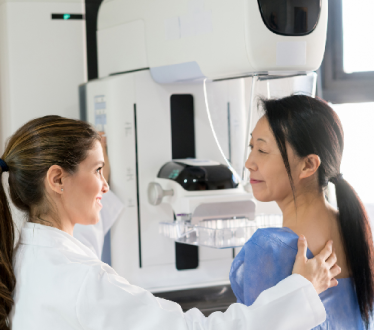Polymastia, also known as supernumerary breast tissue, is a condition that occurs in people and is used to indicate having more than two breasts. This condition happens when something goes wrong in the early stages of breast tissue development. It usually does not cause any symptoms, but it often causes anxiety, problems with how you look, pain, or a limited range of motion.
It is sometimes referred to as polymastia. The morphology of the additional mammary glands varies, ranging from very immature breast tissue beneath the skin that is not visible externally to an additional breast or breasts that are fully functional.
This ailment is connected to polythelia, a more prevalent condition where a person has extra nipples, but it is not the same as polymastia. An individual with polymastia may or may not have a nipple on their extra breast. In contrast, the term polythelia more usually refers to the presence of additional nipples that are not attached to the tissue of the mammary gland. Polymastia is also referred to as hypermastia, which is a disorder in which the breasts become unnaturally enormous.
Polymastia happens more often in females than in males, but both sexes often develop it. It is not harmful to have a supernumerary breast surgically removed, which is what many persons with the condition do for reasons of cosmetics or self-esteem. It is also conceivable for a supernumerary breast to acquire breast cancer in the same manner as normal breasts do. Normal breasts and supernumerary breasts both possess this potential.
Polymastia Symptoms
Polymastia, or possessing more than two breasts, affects 2–6% of women. This disorder often looks like anything from a small mole to a fully functioning ectopic breast. They frequently do not exhibit any symptoms, but when they do or if they hold a malignant tumor, therapy is necessary.
It is not always simple to spot a third or extra nipple. They are often less developed and exhibit a lower size compared to normal nipples. Because of this, it is simple for someone to speculate that it is something else, like just a mole. Nipples come in all shapes and sizes, with some being so tiny that they can not even be seen.
Commonly, a third nipple, also known as a supernumerary nipple, develops in the front part of the body between the armpit and the genitalia.
The primary symptom of polymastia is the development of extra breast tissue or breasts. The extra breast tends to suffer, and symptoms tend to worsen during adolescence, pregnancy, and menstruation. These consist of:
- Tumors that are malignant or benign.
- Abscesses.
- Mastitis (infection).
- Cysts.
- Tenderness.
- Swelling.
Polymastia Causes
The formation of polymastia most frequently takes place when the child is still in the womb. Tissue in the breasts forms along the milk line during normal growth and any excess tissue is absorbed by the body. Polymastia develops when the excess tissue does not disappear during pregnancy or delivery. This illness is often passed down from parent to child.
The uterus is the site where polymastia develops. At four weeks of gestation, the developing embryo’s two milk lines begin to thicken.
The striated ectoderm tissue that forms milk lines develops into the skin of the infant. Two “mammary ridges,” or strips of tissue that cross the thorax, retract into the uterus and form two normal nipples. In other instances, they do not completely diminish, leading to the formation of new nipples.
Polymastia Removal
In most cases, the only effective treatment for polymastia is the surgical removal of all of the enlarged breast tissue, which is also advised due to the increased cancer risk.
Lactation mostly occurs in both men and women with supernumerary nipples, especially if they are more fully developed. To remove excess nipples, a brief, noninvasive outpatient procedure is performed with minimum pain and recovery time.
The removal of these nipples is typically done for aesthetic rather than medical reasons because there is usually no underlying disease.
On the other hand, there are some instances in which a third nipple can have an underlying condition that needs to be addressed by a medical professional. A doctor often considers surgically removing the nipple and prescribing additional drugs. People who possess a breast tumor in their family are also told to get a radical resection rather than liposuction.
 Health & Care Information
Health & Care Information 


